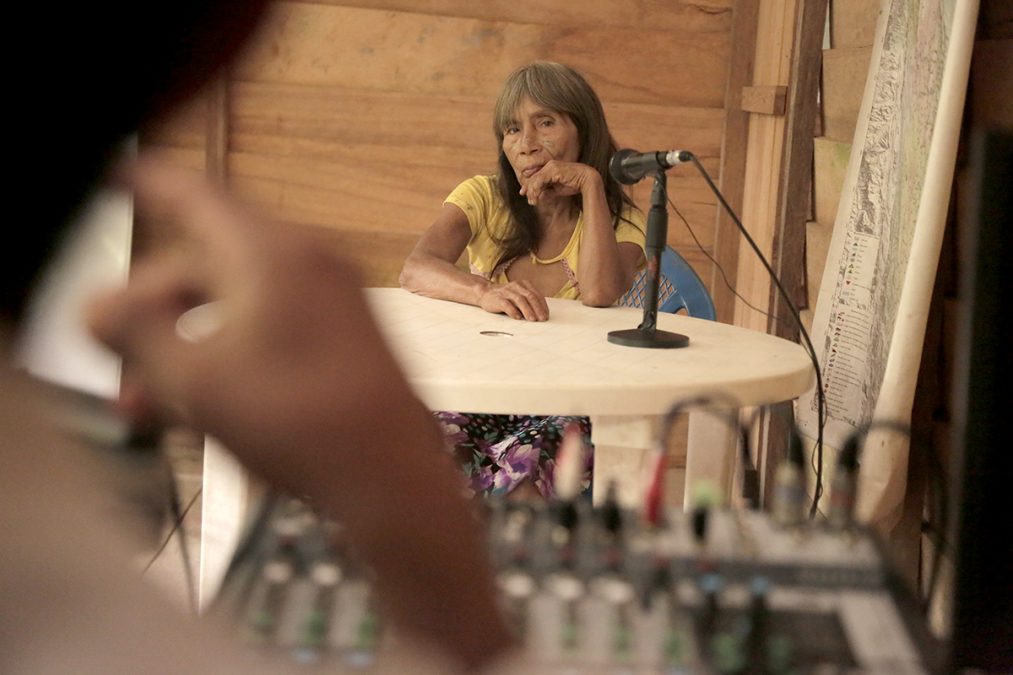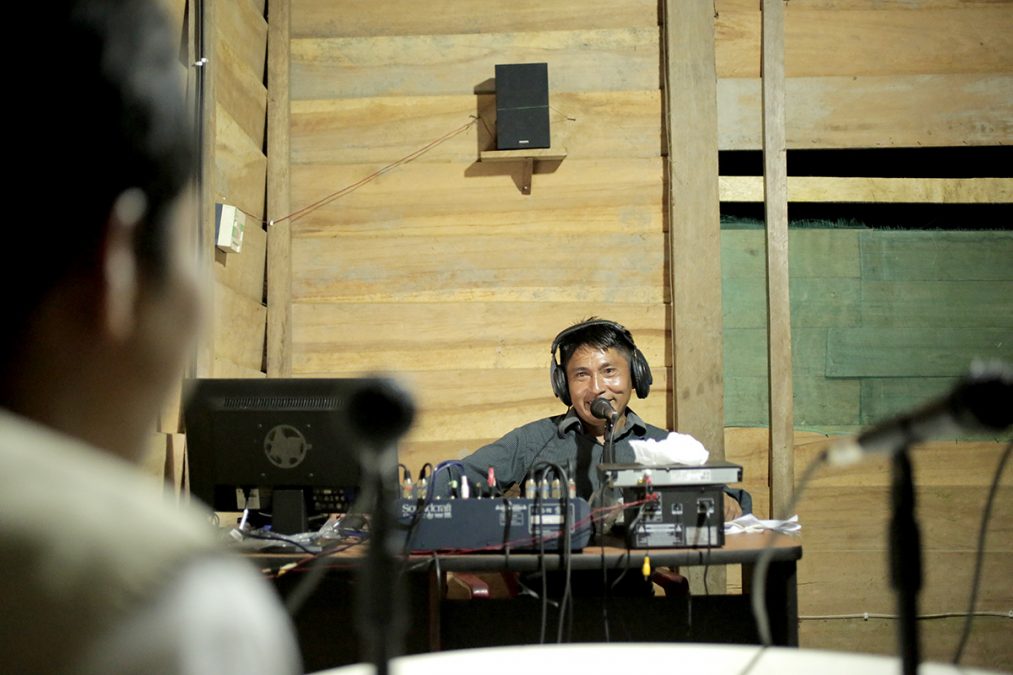
See how others do it!
Read these stories of the use of radio stations to strengthen action in the Peruvian Amazon and in Senegal, and browse through many examples of participatory video!
Tuntui Wampis raises awareness and strengthens action for the Wampis territory of life
Broadcast radio programmes in local languages can be a powerful tool for sharing information and inspiring action in support of territories of life. ‘Tuntui Wampis’ is a local radio station that serves the autonomous territorial government of the Wampis Nation in Peru—an indigenous self-governance institution established in 2015. One of the first decisions of the autonomous Wampis government has been to establish a radio station to serve its people. The name refers to the Tuntui drum traditionally used to send messages at a distance. Broadcasting in Wampis language and Spanish, the radio programmes reinforce a sense of pride and inform the Wampis communities, which are spread out in a large territory, about the process of governance and the decisions taken during the Wampis summits. The programmes describe and call for the respect of rules and regulations and inform the Wampis about how to face their ongoing threats. Given the poor overall communication infrastructure in the Wampis Territory, a crucial service of the radio station is the transmission of greetings among family members and friends living in distant communities and the sharing of local, national and international news.
Tuntui Wampis is run by two Wampis communication professionals who were trained across the border, in Ecuador, thanks to the alliance of the Wampis with the neighbouring Shuar federation, which has been running a radio station for many years. The purchase of the transmission tower and equipment was made possible thanks to the support from the allied NGO IWGIA, and technical guidance was provided by the Peruvian indigenous news agency SERVINDI. After initial problems due to unreliable energy supply, the transmitter is now powered by solar energy and reaches villages in a radius of about 60 kilometres. Since 2019, the radio station also relies on satellite internet connection.
Tuntui Wampis is a key asset for the Wampis to exercise their communication autonomy, responding to the need of informing the Wampis Nation about the activities of their representatives, as well as providing an independent and culturally relevant source of general information. Currently, the Wampis government’s objective is to further strengthen the radio station as a community media centre. Young Wampis will be trained in journalism and communications to be able to produce their own radio programmes, as well as videos, and diffuse them through social media, which is essential to remaining connected with students and migrants who have left the territory.
-

Photo: @ Philipp Eyer -

Photo: @ Philipp Eyer -

Photo: @ Thomas Niederberger -

Photo: @ Jacob Balzani-Lööv -

Photo: @ Jacob Balzani-Lööv
Raising awareness and strengthening action for territories of life through local radio in Kawawana
A local radio programme in local Djola language has also been very useful for Kawawana but, unlike the Peruvian case, the Djola fishermen who run Kawawana do not have a local radio at their disposal and need to raise funds to be able to buy radio time. From 2010 to 2020, the programs have thus been sparse and sporadic… but still extremely effective. The Kawawana programs usually last one hour and are open to the listeners to call in and immediately go ‘live’ with their comments and questions. They are run by people experienced with the history of the territory of life and the various elements of its development, management plan, governance structure, surveillance activities, infractions, retributions for infractions, etc. The questions, answers and explanations need to be very concrete and specific for the program to make sense for the local audience. Overall, according to the Kawawana custodians, the radio programmes have strongly enhanced the visibility of Kawawana, and encouraged other communities to emulate them and establish their own territories of life. Here you can access an example of the interactive radio programme.
Powerful communication through participatory video
Participatory narratives using pictures and videos are also powerful ways to communicate. For more than a decade, the ICCA Consortium has promoted video-stories and photo-stories about territories of life, and many can be found in its website. Click on the name of the country for specific examples from Nepal in Pungmo and Tsum Valley; Iran; Niger; Democratic Republic of Congo (1) and (2); Cambodia; India; The Philippines; Burma/Myanmar; Ecuador; Indonesia; Senegal; Kenya; Spain; (1) and (2); Bolivia; Chile… While these videos vary in approach, all helped internal awareness and unity in the custodian community.
You can also read here read about a pan-African alliance seeking to use participatory video as a tool to share information about their territories of life.